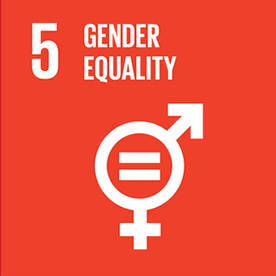Gender Equality
SUSTAINABLE DEVELOPMENT GOALS 5 - GENDER EQUALITY

Sustainable Development Goal 5 (SDG 5 or Global Goal 5) concerns gender equality and is fifth of the 17 Sustainable Development Goals established by United Nations in 2015. The 17 SDGs recognize that action in one area will affect outcomes in others, and that development must balance social, economic and environmental sustainability. A system thinking approach is the base for global sustainability.[1]
SDG 5 has nine targets and 14 indicators. Six of the targets are "outcome-oriented": ending all forms of discrimination against all women and girls everywhere; ending violence and exploitation of women and girls; eliminating harmful practices such as child, early and forced marriage and female genital mutilation; increasing value of unpaid care and promoting shared domestic responsibilities; ensuring full participation of women in leadership and decision-making; and ensuring access to universal reproductive rights and health. The three "means of achieving" targets are: fostering equal rights to economic resources, property ownership and financial services for women; promoting empowerment of women through technology; and adopting, strengthening policies and enforcing legislation for gender equality.[2]
Through the pledge to "Leave No One Behind", countries have committed to fast-track progress for those furthest behind, first.[3]: 54 SDG 5 aims to grant women and girls equal rights, opportunities to live free without discrimination including workplace discrimination or any violence. This is to achieve gender equality and empower all women and girls.
The COVID-19 pandemic has affected women as they are more vulnerable and have reduced access to treatment.[4] Evidence shows there has been an increase in violence against women during the pandemic.[5]
Source : https://en.wikipedia.org/wiki/Sustainable_Development_Goal_5

